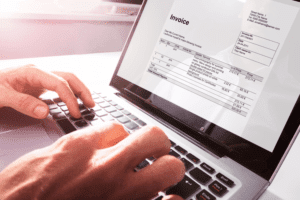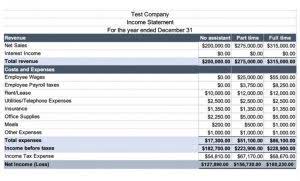
11 SaaS Accounting Software Solutions for 2024

This is a limited software that covers early-stage companies with up to 25 users. The rise of cloud-hosted software is sliding towards meeting evolving customer needs. To handle the changing complex accounting requirements, SaaS accounting software was introduced.

How can your business automate SaaS accounting for payables?
CFOs and their teams need clean, real-time accounting data to properly understand the financial health of the business. It’s the only way to reliably dig into SaaS metrics and glean insights that enable proactive decision-making. But if you and your finance partners are stuck doing everything manually in spreadsheets, you’ll have a tough time embracing your role as strategic business partner.
- The Software as a Service (SaaS) industry has grown exponentially over the past few decades.
- Processing payroll is an ongoing mission-critical task for any accounting team.
- For instance, what metrics, standards, and procedures should you have in place?
- Vanessa Kruze, CPA, is the founder of Kruze Consulting, and her team has helped over one thousand early-stage companies with their bookkeeping, tax and VC due diligence.
- Zoho’s advanced plans include strong project management features like the ability to manage people and expenses at the project level.
- NetSuite provides accounting SaaS solutions that fit with midsize and larger companies.
- It’s essential to keep tabs on your churn rate as it helps you understand customer retention and satisfaction rate and whether your marketing and customer service efforts are paying off.
Accounting methods for SaaS businesses
GAAP’s Accounting Standards Codification 606 (ASC 606) [2] and IFRS 15 [3] is a converged SaaS revenue recognition standard developed by FASB and IASB to drive consistency in financial reporting. ASC 606 and https://www.bookstime.com/ IFRS 15 revenue proposes a flexible, solid five-step structure for revenue recognition. In other words, if you need to know whether your business is growing or not, you need to keep an eye on these KPIs.
Revenue Recognition and Deferred Revenue
- The right infrastructure, technology, and processes can help elevate SaaS accounting from its traditional bean counter stereotype to strategic partner in growing an organization.
- But that process provides a good framework for understanding the accounting process as a whole.
- This is because a company’s data – e.g. historical transactions recorded in a legacy software system or database – does not meet the recognition criteria under IAS 38.
- Higher plans will accommodate increased users and/or transaction volume.
- Whether you go with cash-basis or accrual-basis accounting, the next step is to set up your accounts in your accounting software.
- The firm’s clients are predominantly in the New York metropolitan area, but the firm also services clients throughout the United States and in both Europe and Asia.
Of course, the best founders also embrace these metrics to help them build a best-in-class company. The KPIs below are some that our accounting team has been asked to produce during VC due diligence. The price of incorrectly accounting for revenue and deferred revenue can be high. Public technology companies spend even more time doing due diligence of SaaS revenue recognition, so if you are going to be acquired these numbers matter.

We’ll tackle the basics but also the unique financial challenges artists face. You’ll have your Profit and Loss Statement, Balance Sheet, and Cash Flow Statement ready for analysis each month so you and your business partners can saas accounting make better business decisions. SaaS solutions are on a path to become more specialized to cater to the unique needs of different industries. Use the RFP submission form to detail the services KPMG can help assist you with.


Because of this, an increasing number of SaaS companies are taking a more comprehensive approach to integrating their payments, billing and revenue management, an approach powered by Stripe. In order to improve customer experience, scale globally and increase recurring revenue, it makes sense for SaaS companies to consider accounting as one aspect of a cohesive sales and billing strategy. SaaS companies with recurring revenue models can use predictive models to get a more accurate picture of future growth, customer churn, and overall financial health. Even without the need for funding, it aids in making strategic decisions about product development, marketing investments, and pricing strategies.
Additionally, subscription companies have unique revenue forecasting, cash management and specialized KPIs. With cash-basis accounting, revenue and expenses are recorded only when money owed is paid or received, which means that there are no accounts payable or receivable accounts. This method is typically used by businesses operating with smaller inventory levels or traditional pricing models, and it’s a simpler method than accrual accounting – and easier to use.